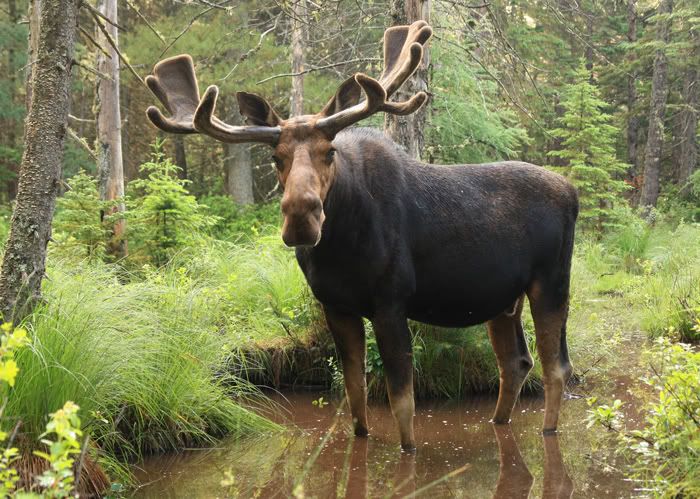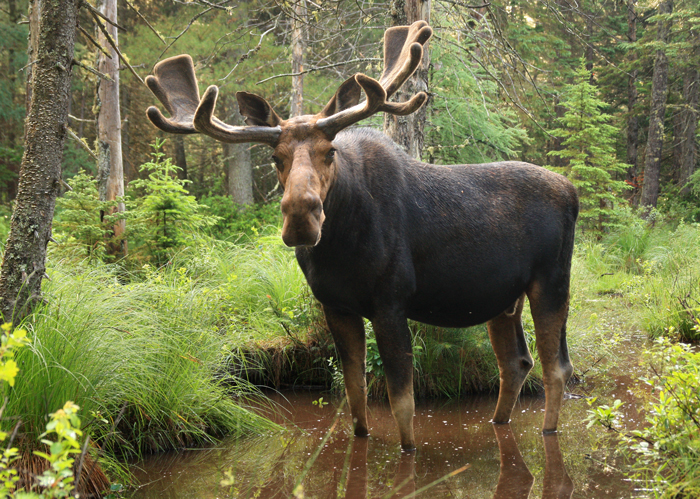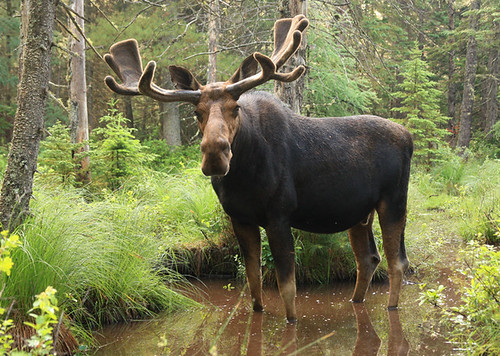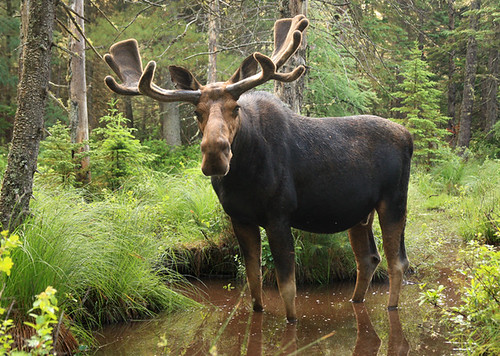Backlighting of a furry or feathery subject IMO is rather idea, as the translucency of the edges creates a nice separation between the subject and the background.
The problem though is that when you have a bright background, and very dark moose, you have a contrast problem that can (doesn't in this case though) exceed the normal dynamic range of an image. Unfortunately there is nothing that you can do in the field to remedy this...
You did right to expose for the moose here, and he looks great. The problem is that the background is bright, flat, and lacking contrast. I did some quick editing, using three layers, and quick masks.
Layer 1: In layers, take out some highlights, and slide midtones and shadows to the right. Then, while in that layer using a black brush, paint the mask over the moose at 100% opacity to remove the effect from the moose, leaving a more contrasty background.
Layer 2: Reduce saturation using hue/saturation. Again, mask out the moose leaving him fully saturated.
Layer 3: Using the dodge and burn technique I showed you earlier in the year, open a new layer with a midtone, and 'paint' a burned in vignette and tone down other bright spots on the background.
Note...I did nothing to the moose at all...only adjusted the background to yeild a more pleasing scene that puts the focus on the moose without distractions.
Thoughts, questions/comments and disagreements welcome!





